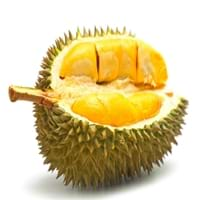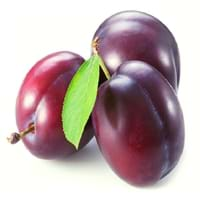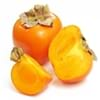Health Benefits
Anti depressant, Boosts immune system, Cancer prevention, Heart care, Reduces stress
Cancer prevention, Cures gastro-intestinal troubles, Heart care, Increase in haemoglobin, Prevents diabetes
General Benefits
Anti oxidant properties, Anti-inflammatory properties, Boosts immune system, Controls blood pressure, Controls blood sugar levels, Digestive aid, Flu treatment, Strengthens bones
Anti-inflammatory properties, Boosts immune system, Digestive aid, Eye care, Flu treatment, Helps in weight loss, Maintains healthy cholesterol level, Treatment of common cold
Skin Benefits
Anti-aging benefits, Brightens and lightens complexion
Anti-aging benefits, Brightens and lightens complexion, Reduces wrinkles, Skin revitalization, Treatment of dark spots
Hair Benefits
Promotes longer and healthier hair, Protects hair
Prevents hair loss, Promotes longer and healthier hair, Protects hair, Remedy for split ends, Treatment of dandruff
Allergy Symptoms
Diarrhea, Headaches, Hives, Nasal congestion, Red rash, Runny nose, Vomiting
Abdominal pains, Anaphylaxis, Vomiting
Side Effects
Affects blood glucose levels, Nausea, Stomach pain
Allergic reaction
Best Time to Eat
Along with meal, As a snack in the late afternoon, Don't consume at night and before bed, Morning time (before lunch)
As a snack in the late afternoon, Eat the fresh ones, avoid mixing with any other foods, don't eat after meal., Morning time (before lunch)
Vitamin B5 (Pantothenic Acid)
Vitamin C (Ascorbic Acid)
Vitamin E (Tocopherole)
Not Available
Vitamin K (Phyllochinone)
Not Available
Lutein+Zeaxanthin
Not Available
Phytosterol
Not Available
Calories in Fresh Fruit with Peel
Not Available
Calories in Fresh Fruit without Peel
Not Available
Calories in Canned Form
Not Available
Calories in Pie
Not Available
Type
Tree fruit, Tropical
Tree fruit
Varieties
D24, D99 (Gob kecil), D123 (Chanee), D145 (Beserah), D158 (Gan Yau), D159 (Monthong), D169 (Tok Litok), D188, D189, D190, D163 (Hor Lor) and D164 (Ang Bak)
Victoria, President, Czar, Ariel, Avalon and Oullins Gage
Color
Green
Pink, Purple, Red
Inside Color
Yellow
Yellow
Taste
Creamy, Sweet
Juicy, Sweet, Tart
Origin
South-Eastern Asia
Caucasus
Grows on
Not Available
Trees
Soil Type
Clay
Clay, Loam, Sandy loam
Climatic Conditions
Hot, Humid
Cold
Facts about
- 1 kg of durian contains 1350 calories which may cause weight gain.
- It may have a hyperthermic effect on the body, making you feel warmer.
- Study shows that durian has an ability to reduce infertility in men & women.
- In china, plums are used for production of wine.
- A chemical called amygdalin found in plum seeds, turns into toxic compound in human body.
- Plum tree produces fruit 3-5 yrs after planting.
Top Producer
Thailand
China
Other Countries
Indonesia, Malaysia, Philippines
Bosnia, Chile, India, Iran, Italy, Romania, Serbia, Turkey, United States of America
Top Importer
China
United Kingdom
Top Exporter
Thailand
Chile
Botanical Name
Durio zibethinus
Prunus domestica
Synonym
Lahia Hassk
Not Available
Subkingdom
Tracheobionta
Tracheobionta
Division
Magnoliophyta
Magnoliophyta
Class
Magnoliopsida
Magnoliopsida
Subclass
Dillenhidae
Rosidae
Family
Malvaceae
Rosaceae
Species
D. zibethinus
P. domestica
Generic Group
Not Available
Rose
Compare Durian and Plum
It is important compare Durian and Plum as both the fruits have a different nutritional value. Their comparison can be done on the basis of their vitamin and mineral content, calories, benefits as well as characteristics, making it easier for us to choose the best fruit for our diet. Their general health benefits are as follows:
Durian Benefits: anti oxidant properties, anti-inflammatory properties, boosts immune system, controls blood pressure, controls blood sugar levels, digestive aid, flu treatment and strengthens bones.
Plum Benefits: anti-inflammatory properties, boosts immune system, digestive aid, eye care, flu treatment, helps in weight loss, maintains healthy cholesterol level and treatment of common cold.
Fruits are also used as a remedy for various hair problems. The hair benefits of Durian are: promotes longer and healthier hair and protects hair and hair benefits of Plum are: prevents hair loss, promotes longer and healthier hair, protects hair, remedy for split ends and treatment of dandruff. Some fruits are known to cause allergic reactions. The allergy symptoms of first fruit are: diarrhea, headaches, hives, nasal congestion, red rash, runny nose and vomiting and the symptoms of second fruit are: abdominal pains, anaphylaxis and vomiting. Get sorted Durian vs Plum comparison with the help of fruit comparison tool by fruitvs.com.









